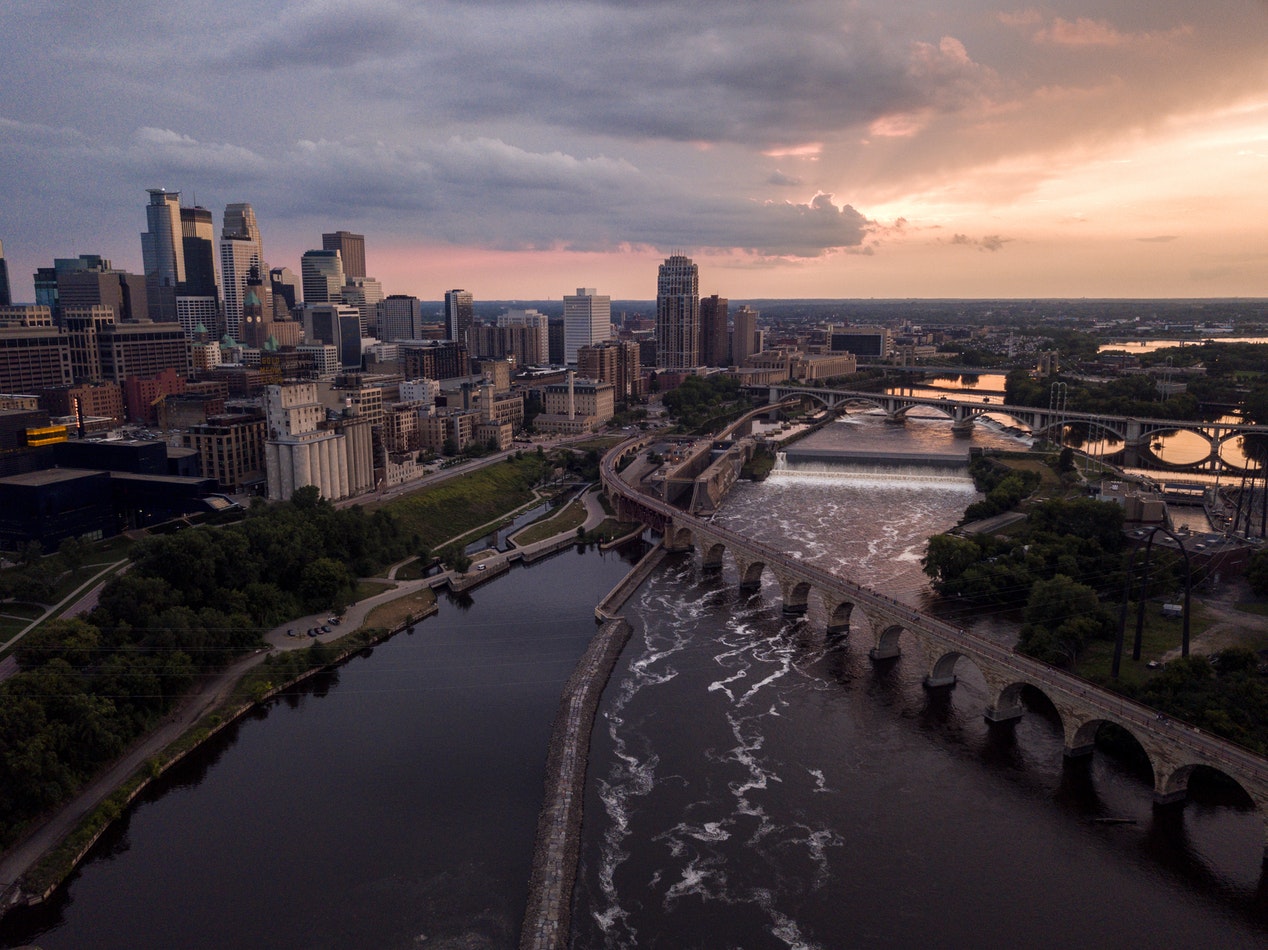
By Matt Doll – Minnesota Environmental Partnership
Over the past week, the Minnesota Pollution Control Agency (MPCA) has released new data on Minnesota’s progress – and the challenge we face – on reducing pollution in our atmosphere. The first report, released last week, found that Minnesota’s greenhouse gas emissions have fallen, especially in the electricity generation sector. But it also showed that they need to keep falling if we’re going to meet our climate action goals. The second report, published on January 8, showed that Minnesota’s air pollution is mostly under control, but not everywhere – and many people are suffering from its harmful effects. Both reports reinforced the urgency of our most pressing environmental challenge: building a cleaner and healthier economy.
Carbon emissions are down, but more ambitious action is needed
The MPCA greenhouse gas emissions report shows progress, but underscores how much further we still have to go.
The good news: between 2005 and 2016, Minnesota’s greenhouse gas emissions fell by about 12% despite significant growth in our economy and our population. This is largely due to a massive decrease – nearly 1/3 – in emissions from generating electricity. As more wind and solar installations replace coal power on the grid, that number will continue to improve.
The bad news: 12% isn’t on par with our goals, and the shortfall exists because other sectors have a long way to go. With electricity’s footprint declining, transportation is now our #1 sector for greenhouse emissions. Most of transportation’s emissions come from light-duty trucks and personal cars – the kind that most Minnesotans use in their day-to-day commuting. Not far behind is agriculture, where crop and animal farming contributes the bulk of net emissions.
The opportunity: Both of these sectors present challenges, but for the most part, the solutions aren’t a mystery. By scaling up our investments in electric vehicle infrastructure and making these vehicles more widely available, we can shrink all types of personal transportation. Expanding and encouraging the use of public transit helps as well – buses and trains, especially if powered by clean electricity, emit far less CO2 than cars for each person they transport.
And we have an opportunity to make agriculture less of a carbon source and more of a carbon sink – while giving farmers a new way to profit – by introducing new carbon-absorbing cover crops and perennials on Minnesota’s farmland.
Most Minnesotans breathe easy, but disparities are significant
The MPCA’s biennial “The air we breathe” report demonstrates how Minnesota’s air pollution, while low and improving, harms susceptible communities.
The good news: Minnesota meets federal standards for air quality, and our emissions of harmful pollutants like particulates and nitrogen oxides are in a steep decline.
The bad news: Air pollution is still causing harm, especially in low-income communities (46% of which are above air quality risk guidelines) and communities of color and indigenous communities (91% are above guidelines.) This is an unacceptable status quo that puts Minnesotans at risk – the Department of Health has calculated that air pollution is the fatal factor in more than 2,000 deaths in the Twin Cities area every year.
The opportunity: The solutions to climate change and air pollution go hand in hand, and they have positive effects on our economy. By creating investments and incentives to transition to clean electricity from fossil-fuel powered vehicles and homes, we can dramatically reduce all emissions and create new job opportunities.
Minnesotans are demanding we move forward
On January 9, a group of more than 100 teenagers from around Minnesota met with Governor Walz and Lieutenant Governor Flanagan to ask them to take action on climate change by regulating greenhouse gas emissions, support legislation moving Minnesota toward 100% clean energy, and continue the Dayton Administration’s court challenge of the carbon-heavy Line 3 pipeline. Their leadership, and that of people and organizations around the state, is giving Minnesotans hope that we can clean up our state’s harmful emissions.
Governor Walz and the Legislature should listen well – Minnesotans want and deserve ambitious action to build a green economy and protect our future.